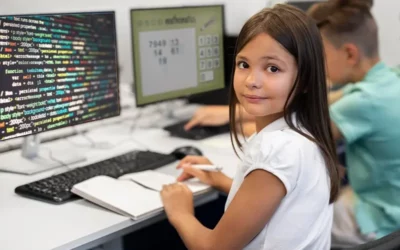In the magical world of childhood, play isn’t just fun – it’s the secret ingredient that sparks the incredible journey of growth and learning. Imagine a world where building blocks aren’t just towers but architects of creativity, and a simple game of make-believe isn’t just pretending, but a doorway to a child’s imagination. Play isn’t just a break from reality; it’s the very heartbeat of early childhood development. It’s through play that little minds learn, explore, and develop the skills they’ll carry with them throughout life. So, buckle up for the adventure – because in the world of kids, play isn’t just child’s play; it’s the key to unlocking a future filled with endless possibilities.
Table of contents
Artistic Adventures
In a world filled with screens and gadgets, it’s easy to overlook the simple joy of creating something with your hands. Artistic adventures offer a delightful escape from the digital realm, inviting us to explore the magic of finger painting, drawing for kids, and crafting. Beyond just a pastime, these activities become gateways to a world where creativity knows no bounds.
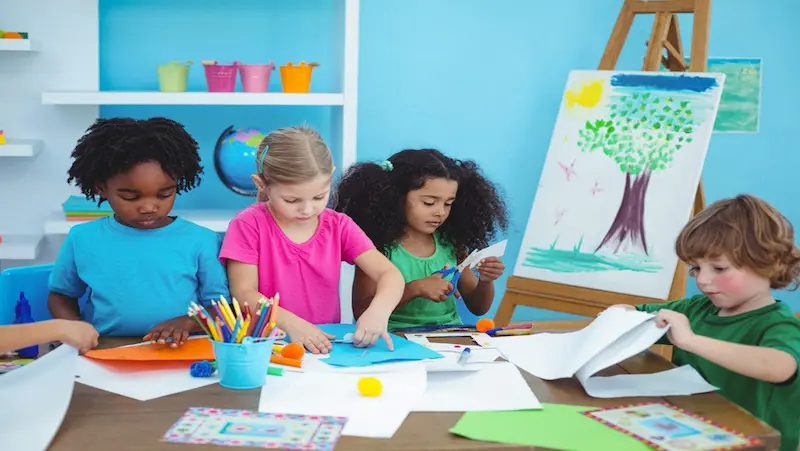
The Magic of Finger Painting:
Remember the sheer delight of dipping your fingers into vibrant pots of paint and letting your imagination run wild on a blank canvas? Finger painting is not just for kids; it’s a therapeutic and liberating experience for adults too. The tactile sensation of the paint, the freedom to create without constraints, and the pure joy of getting messy make finger painting an art form that transcends age.
Through finger painting, we reconnect with our primal instincts, tapping into a reservoir of creativity that often lies dormant in the hustle and bustle of daily life. The swirling colors on the canvas become a testament to our unique expression, a visual diary of emotions and experiences that words sometimes fail to capture.
Drawing: A Window to the Soul:
The simplicity of a pencil and a piece of paper opens up a world of possibilities. Whether you’re sketching the world around you or letting your imagination shape fantastical realms, drawing is a powerful tool for self-expression. It allows us to communicate without words, giving life to thoughts, dreams, and emotions that might be difficult to convey otherwise.
Engaging in drawing activities is not just about creating aesthetically pleasing images; it’s a journey of self-discovery. The act of easy drawing for kids forces us to slow down, observe our surroundings, and appreciate the beauty in the details. It’s a mindfulness exercise that encourages us to be present in the moment, fostering a sense of calm and introspection.
Crafting: From Imagination to Creation:
Crafting is the bridge that connects our ideas with tangible reality. Whether it’s shaping clay, weaving intricate patterns, or assembling pieces into a masterpiece, crafting is a testament to the power of human ingenuity. The hands-on nature of crafting engages both our minds and our fine motor skills, making it a holistic exercise for brain and body.
Through crafting, we learn the value of patience and perseverance. The journey from a jumble of materials to a finished creation is a rewarding process that instills a sense of accomplishment. Moreover, crafts for kids encourages resourcefulness, as we discover innovative ways to repurpose everyday items into something extraordinary.
Imaginative Play
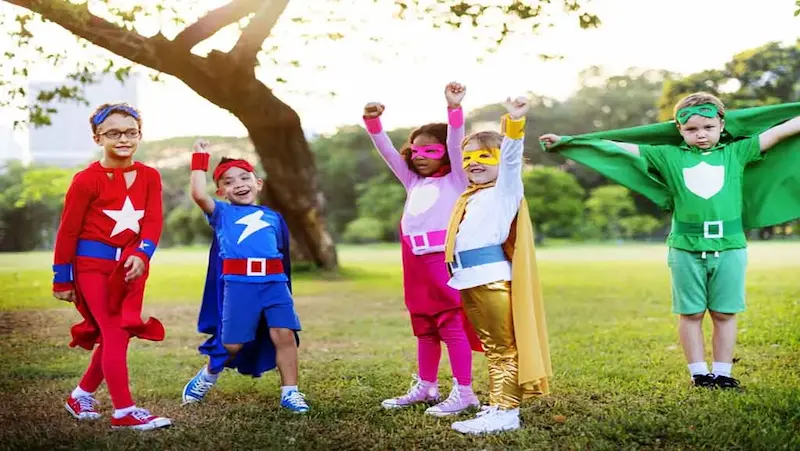
Imaginative Play: More Than Just Dressing Up
We’ve all seen it – the adorable sight of our kids draped in mismatched outfits, armed with makeshift swords or donning capes, transforming into superheroes or fairytale characters. While it might seem like just another playtime activity, there’s so much more going on behind those imaginative adventures.
Benefits Galore
First off, let’s talk about the perks. Imaginative play isn’t just about keeping our kiddos entertained; it’s a powerhouse of learning. When our little ones engage in activities for kids like dress-up, they’re not just playing make-believe – they’re developing crucial cognitive skills.
Enhancing Cognitive Development
Imaginative play exercises those little brains in ways we might not even realize. When kids create stories for kids and scenarios in their minds, they’re flexing their cognitive muscles. They’re learning to think creatively, problem-solve on the fly, and even understand cause and effect. It’s like a mini workout for their developing minds!
Pretend Play: The Social Skills Bootcamp
But it’s not all about smarts. Imaginative play is also a social skills bootcamp for our youngsters. When they engage in pretend play with friends or siblings, they’re navigating the intricate waters of social interaction. Sharing roles, negotiating storylines, and working together to create a shared make-believe world – it’s like a crash course in teamwork and empathy.
Storytelling: Building Communication Skills
Now, let’s not forget the magic of storytelling. Whether it’s narrating their adventures to stuffed animals or spinning elaborate tales with friends, storytelling during imaginative play is a golden ticket to honing communication skills. It helps kids articulate their thoughts, express themselves, and even boosts their vocabulary – all wrapped up in the joy of a good story.
The Parent’s Role: Nurturing the Imagination
As parents and caregivers, we play a crucial role in nurturing our little one’s imagination. Encourage imaginative play by providing a variety of props and costumes. Create a safe space where their creativity can run wild. Join in the fun, be a part of their imaginary world, and watch the magic unfold.
Science and Nature Exploration
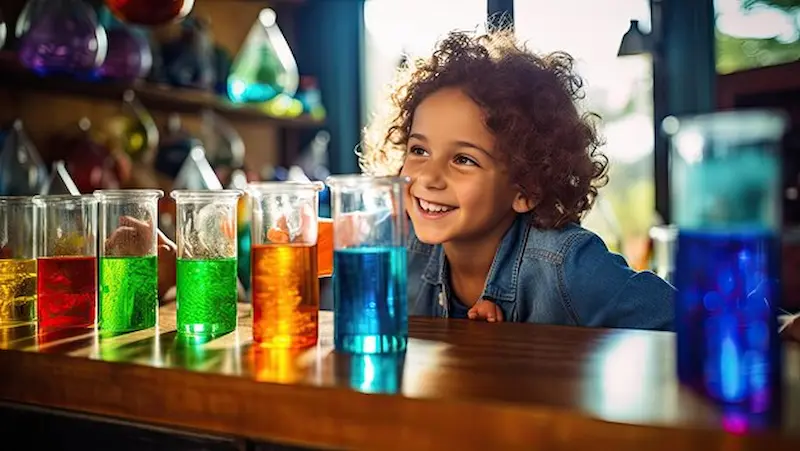
Hands-on Science Experiments: Unleashing the Curiosity
There’s something magical about the curiosity of a child and the twinkle in their eyes when they uncover the mysteries of the world. Engaging in hands-on science experiments for kids is not just about learning facts; it’s about experiencing the thrill of discovery.
a. Simple Science at Home:
You don’t need a fancy lab to ignite the spark of scientific curiosity. Gather household items, like baking soda, vinegar, and food coloring, and watch the excitement unfold as you create a mini volcano eruption right in your kitchen. The joy of seeing a chemical reaction firsthand is unparalleled.
b. The Science of Nature:
Take the science experiments outdoors and explore the wonders of nature. Collect leaves, rocks, or insects and observe them closely. Let your young scientists ask questions, make predictions, and draw conclusions. It’s not just about the experiment itself but the process of exploration and inquiry.
Outdoor Nature Exploration: Lessons from Mother Nature
In our fast-paced lives, we often forget to pause and appreciate the beauty that surrounds us. Outdoor nature exploration provides an opportunity to reconnect with the Earth and teaches us profound lessons about life.
a. Nature Scavenger Hunts:
Turn a simple walk in the park into an adventure by organizing a nature scavenger hunt. Create a list of items to find, such as a feather, a pinecone, or a specific type of flower. Not only does this activity encourage observation skills, but it also fosters a deep appreciation for the diversity of the natural world.
b. The Art of Observation:
Encourage your budding naturalists to become keen observers. Sit quietly in a natural setting and challenge them to notice the subtle details — the rustle of leaves, the chirping of birds, or the scent of blooming flowers. Nature has its language, and learning to listen to it can be a transformative experience.
The Value of Learning about the Natural World: A Lifelong Journey
The lessons learned through science and nature exploration extend far beyond textbooks and classrooms. They shape inquisitive minds, foster a love for learning, and instill a profound respect for the environment.
a. Environmental Stewardship:
Understanding the intricacies of ecosystems and the delicate balance of nature instills a sense of responsibility towards the environment. As young explorers grow, so does their commitment to preserving and protecting the planet.
b. Connection to the World:
Science and nature exploration offer a holistic understanding of the world we inhabit. It teaches us that we are not isolated entities but integral parts of a larger, interconnected web of life. This realization fosters empathy, humility, and a deep sense of belonging.
Music and Movement
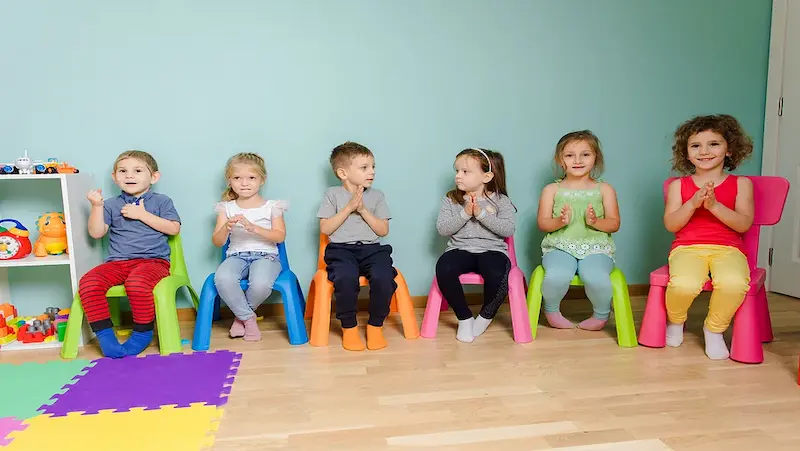
The Harmonious Impact:
Imagine a world where every footfall is a dance step and every giggle is a melody – that’s the world that music and movement create for our children. These activities are not just about having fun; they are powerful tools that contribute to a child’s cognitive, emotional, and physical development.
1. Cognitive Growth:
Engaging in musical activities stimulates various areas of the brain, enhancing a child’s cognitive abilities. From recognizing patterns in music to memorizing lyrics, these experiences lay the foundation for improved memory and problem-solving skills. Studies have shown that children exposed to music perform better in tasks that require spatial-temporal skills, setting the stage for academic success.
2. Emotional Well-being:
Music has a unique ability to evoke emotions, and when combined with movement, it becomes a cathartic release for children. Dancing and singing allow kids to express themselves freely, fostering emotional intelligence and self-awareness. These activities also promote a sense of accomplishment, boosting confidence and resilience in the face of challenges.
3. Physical Development:
The rhythmic nature of music naturally encourages movement, contributing to the physical development of children. Dancing, whether it’s twirling to a favorite song or mimicking the latest dance craze, enhances coordination, balance, and gross motor skills. Introducing musical instruments adds an extra layer, refining fine motor skills as little hands grasp, shake, or tap to the beat.
Activities to Ignite the Melodic Journey:
Now that we understand the symphony of benefits, let’s dive into some simple yet effective activities that can be seamlessly woven into a child’s daily routine.
1. Dance Parties:
Transform your living room into a dance floor and let loose! Put on some upbeat tunes and dance like nobody’s watching. Encourage your child to move freely, expressing themselves through their unique dance moves. Not only is it a fantastic energy release, but it also strengthens their muscles and improves coordination.
2. Karaoke Nights:
Unleash the inner rock star with some karaoke fun. Singing along to favorite songs not only enhances language skills but also boosts confidence. Create a family karaoke night and watch the joy and laughter fill your home.
3. DIY Instruments:
Craft simple musical instruments together, such as shakers made from rice-filled containers or drums made from empty boxes. This not only sparks creativity but also introduces children to the world of rhythm and beats.
Sensory Play
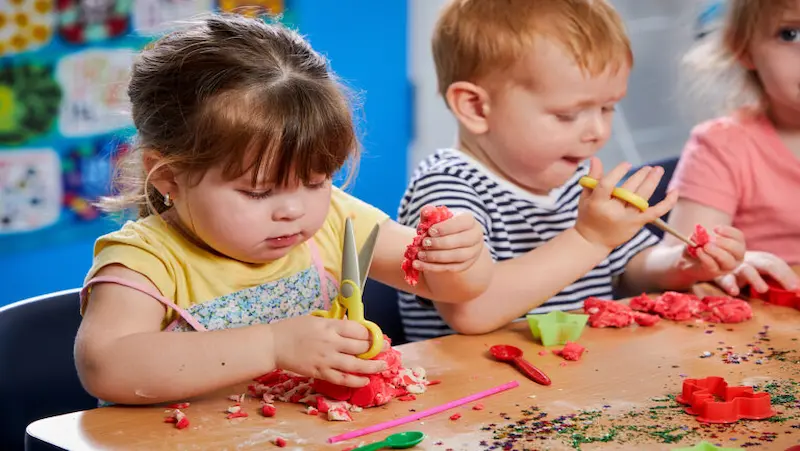
The Gateway to Development:
Children are born explorers, and their senses are the compass guiding them through the uncharted territories of the world. Sensory play acts as a crucial gateway, fostering the development of these senses – touch, sight, smell, taste, and hearing.
a. Touch:
The tactile sensation of different textures is like a symphony for a child’s fingertips. From the soft embrace of cotton to the ticklish dance of sand, these experiences lay the foundation for fine motor skills, hand-eye coordination, and an understanding of the world.
b. Sight:
Colors, shapes, and patterns come alive in the hands of a child. Sensory play encourages visual exploration, helping little ones distinguish between hues, recognize shapes, and develop visual acuity – skills essential for future learning.
c. Smell:
The world is a bouquet of scents waiting to be discovered. Through sensory play, children engage their olfactory senses, honing their ability to identify and differentiate smells. This sensory adventure can evoke memories and emotions, creating a richer understanding of their surroundings.
d. Taste:
Exploring tastes isn’t just about savoring flavors; it’s a journey of expanding palates and developing preferences. Sensory play involving safe, age-appropriate tastes introduces children to the diverse world of food, laying the groundwork for healthy eating habits.
e. Hearing:
The world is a symphony of sounds, and sensory play helps children tune into this auditory wonder. From the rustle of leaves to the tinkling of bells, these experiences contribute to auditory discrimination and the development of language skills.
Activities that Spark the Senses:
Now that we’ve uncovered the significance of sensory play, let’s dive into the fun part – activities that engage the senses and ignite the flames of curiosity.
a. Texture Treasure Hunt:
Create a treasure hunt using different textures – soft, rough, smooth, and bumpy. Blindfold the little explorers and let them feel their way through the hidden treasures, guessing the textures as they go.
b. Scented Art Creations:
Mix a drop of different extracts, like vanilla, mint, or citrus, into paint or playdough. Let the children express themselves through art while exploring the delightful world of scents.
c. Taste-Test Kitchen Adventure:
Turn the kitchen into a taste-testing laboratory. Offer a variety of safe and age-appropriate foods for the children to explore. Discuss flavors, textures, and preferences as they embark on a culinary journey.
d. Nature Sound Scavenger Hunt:
Take the children outdoors and let them listen to the symphony of nature. Create a list of sounds – bird songs, rustling leaves, flowing water – and challenge them to identify each one.
Learning Through Play
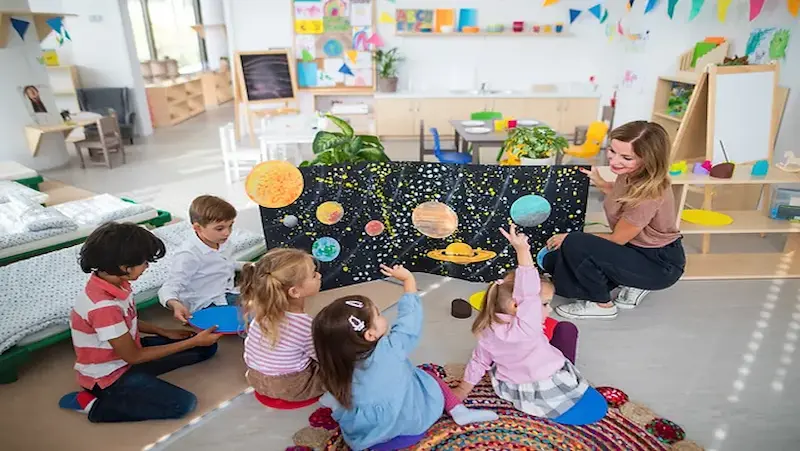
Playful Numbers:
Let’s start with the enchanting world of numbers. Math can be a daunting subject for many, but when introduced through play, it transforms into an exciting adventure. Consider games like “Number Safari” or “Counting Treasure Hunt.” These not only teach kids to count but also sneak in addition and subtraction in the most entertaining way possible. By incorporating these games for kids into playtime, children effortlessly absorb numerical concepts, setting a strong foundation for future math endeavors.
Colorful Discoveries:
Ah, the vibrant palette of colors! Beyond their aesthetic appeal, colors play a crucial role in early childhood development. Simple games like “Color Bingo” or “Painting Party” not only unleash the artistic flair in your little ones but also deepen their understanding of colors. As they laugh and play, children effortlessly learn to differentiate between hues, fostering creativity and observational skills.
Shapes in Play:
Shapes are the building blocks of our visual world, and incorporating them into play is both fun and educational activities for kids. Picture this: a game of “Shape Detectives” or “Shape Sorting Race.” These activities engage children in a playful quest to identify and match various shapes, enhancing their spatial awareness and problem-solving skills. Before they know it, they’ve mastered the basics of geometry, all while reveling in the joy of play.
The Educational Essence:
Now, you might be thinking, “Are these games just for fun, or do they actually contribute to education?” The answer is a resounding yes to both! The magic lies in the seamless integration of education into the play. Children absorb knowledge effortlessly when it’s presented in a playful context. These online games for kids aren’t just about passing the time; they’re about building a solid educational foundation in a way that sparks curiosity and a love for learning.
Conclusion
In conclusion, creative playtime isn’t just about fun and games for preschoolers; it’s a crucial building block for their overall development. Through activities like drawing, building, and imaginative play, kids learn essential skills like problem-solving, social interaction, and even a bit of early academics. It’s not just about passing the time; it’s about laying the foundation for a well-rounded and happy future. So, let them play, explore, and create – it’s more than just play; it’s the gateway to a world of learning.
To get your hands on more such articles, educational content, and free resources on coding classes for kids, online robotics classes for kids, game development, etc., check out the BrightCHAMPS Page now!
Frequently Asked Questions
A1: Engaging in such play helps enhance cognitive skills, creativity, social interaction, and problem-solving abilities in young children.
A2: Offer open-ended materials, such as blocks, art supplies, and dress-up clothes, and participate in their play to stimulate imagination and learning.
A3: Yes, activities like scavenger hunts, sensory bins, storytelling, and simple science experiments can be both enjoyable and educational for preschoolers.
A4: Experts recommend around 60-90 minutes of unstructured creative play daily for preschoolers to support their development.
A5: Absolutely. These activities can often be modified to suit different needs and abilities, promoting inclusion and learning for all preschoolers.

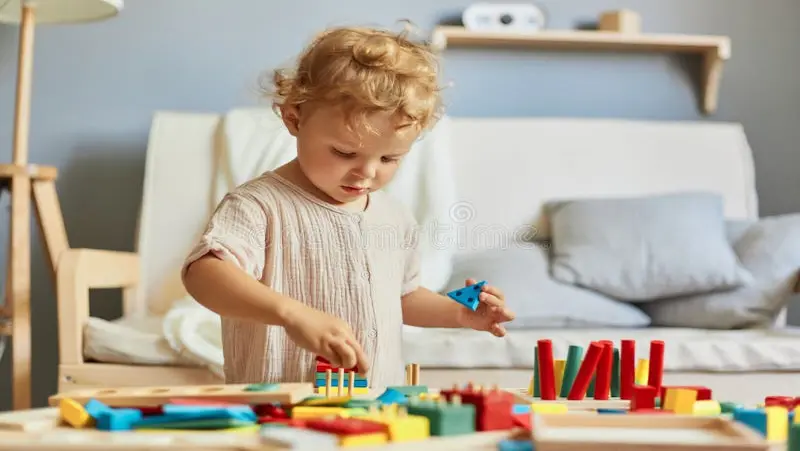
 We are an army of educators and passionate learners from BrightChamps family, committed to providing free learning resources to kids, parents & students.
We are an army of educators and passionate learners from BrightChamps family, committed to providing free learning resources to kids, parents & students.












